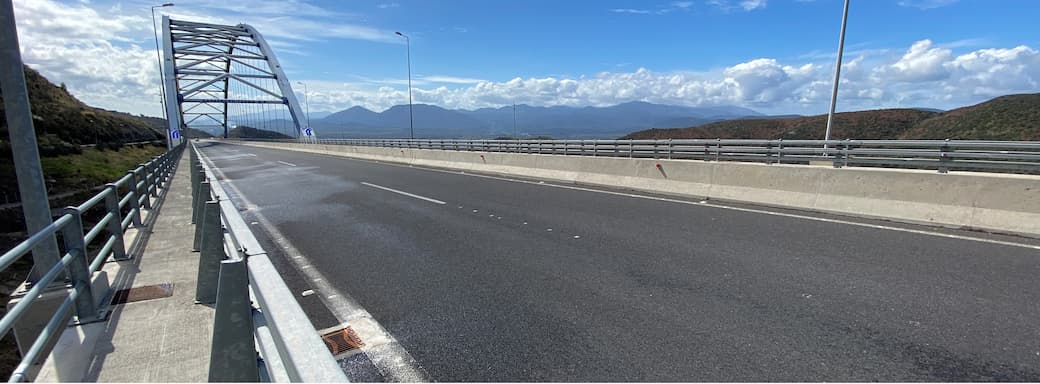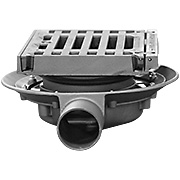
Name:
Water collection manholes
Bridge drains br />
General category:
Water Collection and Drainage Systems
Applications:
Road construction
Construction material:
Malleable cast iron
Certifications:
EN 124
Manufacturers:

Water collection manholes
Bridge drains br />
General category:
Water Collection and Drainage Systems
Applications:
Road construction
Construction material:
Malleable cast iron
Certifications:
EN 124
Manufacturers:
BRIDGE WATER COLLECTION
Water collection manholes are an integral part of the bridge deck and therefore must guarantee safe traffic and infrastructure protection.The range of products of the bridge drainage systems that we provide, includes drains HSD-2 and HSD-5 according to the German standards. Characteristic of both are safety, simple operation and minimal maintenance.
The HSD-2 and HSD-5 bridge water collection drains are made of ductile cast iron, with the possibility of adjusting the height of the grate. They have a suitable device for adapting the sealing membrane according to EN 1229 while their system load class is D400 according to EN 124. The system has a solid substances retaining basket to prevent carried materials from entering the pipeline. All grates at the water intakes are openable and have a sufficient size with dimensions 300x500mm or 500x500mm, as well as a lock for protection against theft and vandalism. The bottom of the drain is connected to the piping and is placed first during concreting. Then sealing membranes are applied around the outer walls of the spout according to the manufacturer's instructions.
The most important features of HSD bridge drains:
- They are made of ductile cast iron for optimal durability
- Loading class D400, according to the standard EN124
- Stainless steel special locking system without screws for protection against accidental opening
- Wear resistant rubber to eliminate noise
- Height adjustment and rotation of the upper part
- Hot-dip galvanized steel solids retaining basket
- Easy and fast opening and closing
- Sealing flange for reliable connection to the membrane
- High hydraulic draining properties
Diffuser:A hydraulically suitable route to the point of discharge must be ensured to remove runoff from the bridge abutment. This route is usually implemented with an open pipeline or piping. If there is no hydraulically acceptable physical route, then it should be configured. In any case the runoff must be directed away from all structural elements of the bridge, in such a way as not to create conditions for corrosion that may be caused by the chemical components of the runoff. When possible, the free fall of water should be used in relation to the uses of the space under the bridge. Free fall systems should be extended so that the outlets are located below the superstructure and placed away from the pedestals to avoid wetting the bridge parts when winds are blowing. Also such systems should be installed so that the fall of water does not cause damage to anything under the bridge, such as roads, railways, sidewalks, etc. These systems are known as diffusers and create a bridge drainage dispersion. They consist at the bottom of a round or pointed surface to "break" the water jet while at the top there is a rubber with a clamp to adapt to the respective cross section of the pipe.
In deck renovation projects, most commonly only the grate needs to be replaced. We have low profile grates for easy and fast installation.
In deck renovation projects, most commonly only the grate needs to be replaced. We have low profile grates for easy and fast installation.


